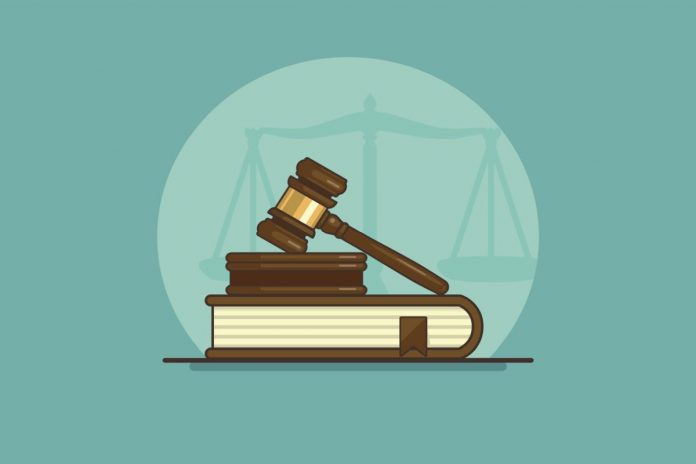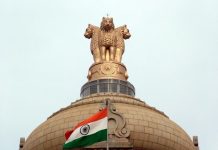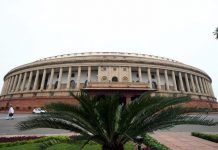This article is written by Ronika Tater from the University of Petroleum and Energy Studies, School of Law. In this article, she discusses the recent Bill passed by the state government of Haryana. It also provides a relation between the fundamental rights of the protestors and the right to protest peacefully with the support of case laws and other relevant provisions.
Table of Contents
Introduction
Recently, the Haryana Government passed the Haryana Recovery of Damages to Property During Disturbance to Public Order Bill, 2021 (hereinafter referred to as the “Bill”) amid the protest by the opposition. The Bill provides for the recovery of damages to public or private property by protestors during times of agitation. It also states that if any person is leading, organizing, planning, exhorting, instigating, participating, or committing any incidents which would lead to public or private damages, they would be liable to pay compensation as per the provisions mentioned. On the one hand, this Bill has been considered as a move to victimise the innocent or the politics of the ongoing farmer’s protest. On the other hand, this Bill protects the public and private property of the people from any unknown agitation around the State. Similarly, earlier the Uttar Pradesh Government has also passed a Bill named Uttar Pradesh Recovery of Damages to Public and Private Property Act, 2020.
Key points about the Bill
The following are some of the key points mentioned in the Bill:
- The Bill provides for the recovery of damages to public or private properties caused by any person during the times of agitation by an assembly, lawful or unlawful consisting of riots, protest and violent disorder.
- The Bill not only provides compensation for public and private properties but also includes the amounts spent in using additional police or paramilitary force to maintain peace during disturbance to public order.
- It ensures compensation to the victims in the same manner as the arrears of land revenue. The officials also have the power to attach the property or bank account of the person involved in the disruption of public order.
- The Bill provides for the establishment of a tribunal to determine the liability, assess the damages caused and accordingly award compensation.
- The Bill also provides that any party aggrieved by the award may appeal against the order of the tribunal before the High Court of Punjab and Haryana. Further, it states that no civil court shall have the jurisdiction to determine any question in relation to the claim for the compensation amount.
- The tribunal is vested with the power to award exemplary damages to be paid by the person into the Consolidated Fund of India. It may charge a simple interest of 6 per cent on the compensation amount.
- The Bill provides to charge 20 percent of the compensation amount with the collector before appealing against the order of the tribunal.
Need for this Bill
This Bill has received a vociferous protest from the leaders of the opposition claiming it to be “anti-people”. It takes away the very essence of democracy and encourages dictatorship. They also pointed out that the motive of the Bill is to harass innocent people and there is already a law regarding the destruction of public property in the Indian Penal Code, 1860 (IPC). This Bill also violates the fundamental rights under Article 19 and Article 21 of the Constitution of India. The State Government stated that it is not anti-people or violative of fundamental rights. The government also stated as follows:
- It is the responsibility of the state government to protect the property of the state whether it is private or public.
- While ensuring to uphold the principle of democracy, the government states that everyone has a right to speak and protest as per Article 19. However, no one has a right to damage property during the time of protest.
- There is a need to establish a legal framework to cause apprehension in the minds of the perpetrators of violence or causing public disorder such as the planners, instigators, participants, etc
Legal provisions
The Prevention of Damage to Public Property Act, 1984 (“PDPP Act”) provides the provision for punishment to any person who commits mischief by doing any act to damage any public property with a term of imprisonment for five years and a fine or both. The provision of this law is synchronous to the provisions of IPC. Despite a law against the destruction of property, there is still an increasing rate of incidents of rioting, vandalism, and arson during the time of protests across the country. Subsequently, in 2007 the Supreme Court took suo motu cognizance of these incidents and constituted two committees headed by former Apex Court judge Justice K T Thomas and senior advocate Fali Nariman to provide suggestions to the said law.
Thomas committee
Following are some of the recommendations mentioned by the Thomas committee:
- In criminal law, the burden of proof is on the prosecutor, however, the committee recommended reversing the burden of proof against protestors. Hence, the courts should presume the accused to be guilty.
- The PDPP Act must incorporate a rebuttable presumption that the accused is guilty of the offence.
- It should contain provisions to make the leaders of the organization liable who calls for direct action and are guilty of abetment of the offence.
- To provide the police officers to arrange videography of the activities damaging public property.
The Supreme Court accepted the above-mentioned suggestions.
Fali Nariman committee
Following are some of the recommendations mentioned by the Fali Nariman committee:
- The Courts should lay down principles on which liability and damages could be assessed.
- In case any injury to the property is caused, the compensation for reparation by way of damages should be such that it puts the party who has suffered the damages in the same position as he would have been before the damage was caused.
- While dealing with extracting damages for destruction from the rioter, it stated that it should be made strictly liable and compensation must be collected for all the damages done.
- It also stated that the Supreme Court should take suo motu cognizance and set up a machinery to investigate the damage caused and award compensation accordingly.
The Court accepted the above-mentioned suggestions.
Guidelines by the Supreme Court
The Court has the power to issue guidelines, in the case of Union of India v. Association, (2002), it was held that the Courts are not envisaged with the power to amend the Act and the Rules. It also stated that while providing directions it should be contrary to the Parliament Act and the Rules. However, in a case where the Act or the Rules are silent on a particular subject, the courts can issue necessary directions or orders to fulfil the vacuum or void of the said law enacted. In the instant case of In Re: Destruction of Public & Private Properties v. State of A.P and Ors.,(2009), the Supreme Court issued the following guidelines based on the recommendation of the two expert committees:
- Whenever there is a case of mass destruction to the property at the time of protest, the High Court may issue suo motu action and investigate the damage to accordingly award compensation to the accused.
- In the case of more than one state involved, such action may be taken before the Supreme Court.
- The power of the High Court and the Supreme Court is extended to appoint a sitting or retired High Court Judge or District Judge to be a Claims Commissioner in order to investigate and estimate the damages caused.
- An assessor may be appointed to support the Claims Commissioner in its finding and report.
- The Claims Commissioner and the assessor may seek instructions from higher courts in the case to summon the existing video recording to investigate the damage and find out the perpetrators of the damages.
- The principle of absolute liability shall be applied once the accused and the nexus with the event caused is established.
- The liability will also be borne by the organizers of the incident.
- Damages should be in the form of exemplary and the award granted should not be greater than twice the amount of the damages liable to be paid. Exemplary damages are not compensatory in nature but they are awarded in order to punish the accused to prevent him from committing similar behaviour in the future.
- Damages can also be assessed for public property, private property, injury, death, or any case borne by the actions of the authorities to take preventive measures to avoid public disturbance during the time of protest.
- The Claims Commissioner has to furnish a report to the higher courts after hearing both the parties at the time of the proceedings.
Recent case law
In the case of Koshy Jacob v. Union of Indiaprotects, (2017), the petitioner who was forced to spend more than 12 hours on the road after undergoing surgery due to the ongoing agitation moved a petition to the Supreme Court seeking the implementation of the guidelines issued under Re: Destruction of Public & Private Properties v. State of A.P and Ors. The recommended amendments included making such agitations accountable and punishable under the criminal law, preventive measures such as videography and award for damages. Despite such recommendations, no legislation for the speedy mechanism has been put into action by the concerned authorities. Since no law has been into force, the petitioner had to approach the Supreme Court for suitable direction to seek compensation.
Moreover, the Court reiterated that the laws need to be amended and the following recommendation has been made to the concerned authorities as follows:
- If the officer-in-charge of a police station or any other law enforcing agency receives any information either declared or undeclared of any destruction or damage to public property, he shall appoint the service of the video operators. Even a panel of local video operators shall be constituted in each police station.
- The officer-in-charge of a police station or any other law enforcing agency receives any information either declared or undeclared of any destruction or damage to public property, he shall accompany the videographer to the site or any other site where the action may take place.
- The organizers of the protest must meet the police to review and revise the Constitution for a peaceful march or protest.
- All the weapons which are apprehended to cause destruction to any property shall be prohibited such as knives, lathis, etc.
- An undertaking must be provided to the organizer of the protest to ensure a peaceful protest.
- In case of any incident, the police officer in charge must report to the state government and accordingly a report of the incident should be forwarded to the higher court for speedy remedy and action.
- That the amended law may provide for a speedy mechanism for criminal liability, action for administrative failures, and remedies to the victims.
- It is also suggested to establish one or more district/additional district judges by the State Government in consultation with the high courts to deal with the current rise in agitations.
The following are some of the suggestions made by the Union of India to the concerned authorities to consider while making a proposed law, however, the Court in this instant case did not grant the petitioner any compensation since the evidence against the organizers were not brought before the Court.
Suggestions made by the Union
Following are some of the suggestions below-mentioned:
- The right to protest and participate in peaceful protest is the right of the people in this country, however, every organiser of a protest should provide a clear declaration ensuring that the participants of the protest will not damage any public property.
- With the advent of technology, tools such as facial recognition technology, camera surveillance could be monitored by the police to hold down the agitations and provide a speedy remedy.
Conclusion
India’s history of protests derives its origin from Mahatma Gandhi’s path of civil disobedience, dandi march, and other non-violent protests which were a sine qua non of our freedom struggle. This legacy continued over the years and thereafter the right to protest peacefully was envisaged under the Constitution of India as a fundamental right. Over the years, these bandhs, hartals, and protests have taken the form of agitations and violence disrupting public property. Consequently, anything which is contrary to democratic values and morals should be checked and brought to the notice of the public with the right amount of justice.
References
- https://economictimes.indiatimes.com/news/politics-and-nation/haryana-passes-bill-to-recover-damages-after-violent-protests-congress-links-move-to-farmers-stir/articleshow/81574717.cms?from=mdr.
- https://theprint.in/india/governance/haryana-passes-bill-for-recovery-of-damages-to-property-makes-planners-liable-too/624287/.
- https://indianexpress.com/article/explained/destruction-of-public-property-what-law-says-what-top-court-directed-6170546/.
- https://www.thehindu.com/news/cities/Delhi/haryana-property-damage-recoverybill-comes-under-fire-from-activists/article34227045.ece.
LawSikho has created a telegram group for exchanging legal knowledge, referrals, and various opportunities. You can click on this link and join:
https://t.me/joinchat/J_0YrBa4IBSHdpuTfQO_sA
Follow us on Instagram and subscribe to our YouTube channel for more amazing legal content.












